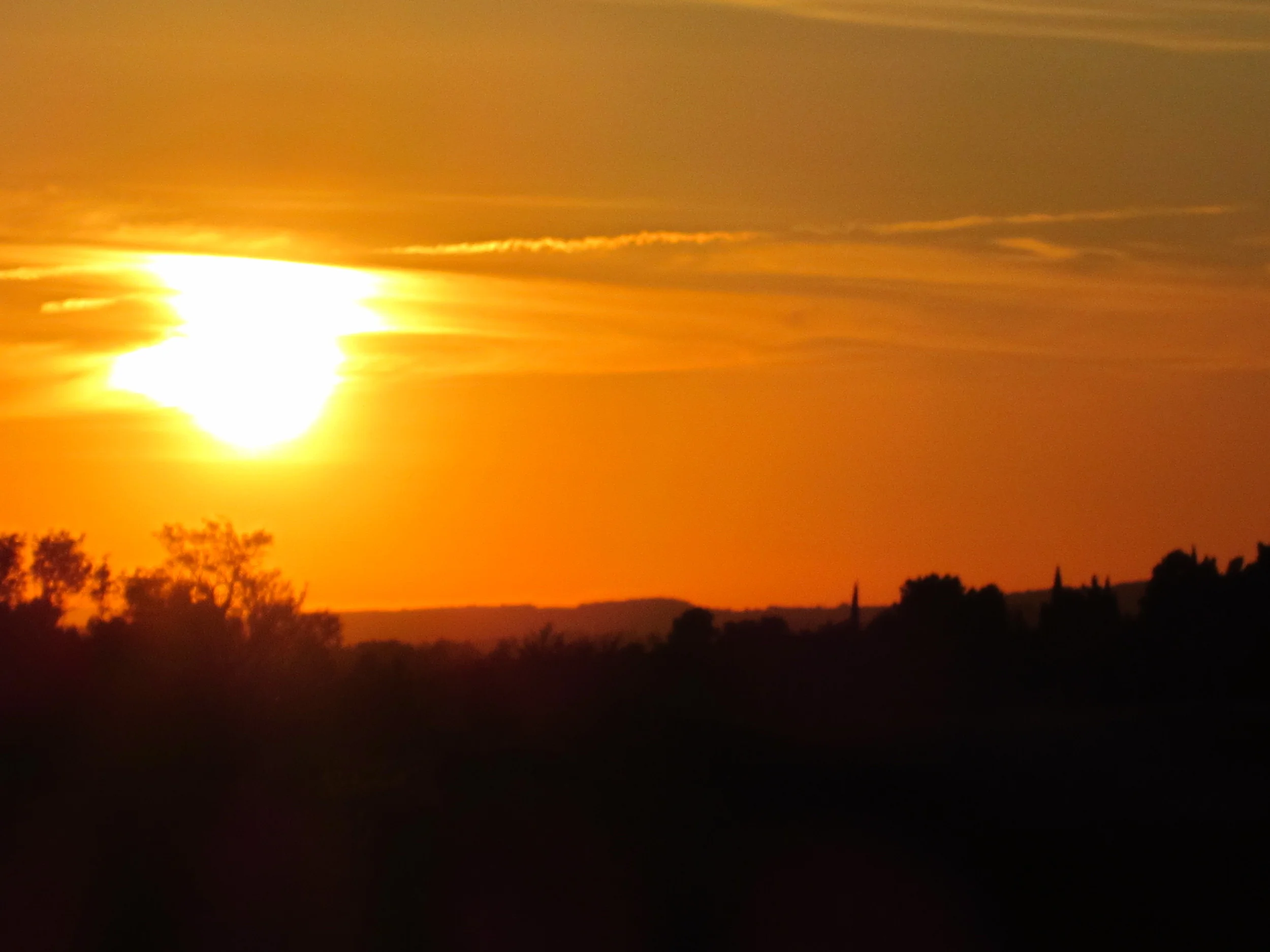The year has been a theatre of fluctuating weather patterns, an exasperating harvest period with super-sensitive cellar work, but with a quite satisfactory finale to the whole work.
After 3 years of sub-par rainfall, respite to the water-table was provided in 2011 by a steady and even precipitation throughout the year. The Minervois has traditionally had some 650-750 mills (25-29 ins) annually, dominantly over the winter/spring months, but this dropped to 350-550 annually over 2008-2010. By contrast, we received a more normal 690 mills during the 12 months including summer and the September harvest time (certain neigbouring areas received much more). Hallelujah! This was critical for the 2011 harvest, a year of no water stress for once, permitting a return to “normal” volumes of production (+ 20-25% over 2010, - but then what is “normal” for today’s weather patterns?) but with some worrying times leading up to and including harvest period. However, unlike other vineyard areas in France, we have not been subject to either storms or hail and are thankful for large mercies.
Temperature variation, in contrast to the even precipitation pattern, was highly uneven through winter, the growing period and right up to harvest time. Spring was ushered in early with above-average temperatures (in the low 30s C), which triggered early budding and everyone talking about an early August harvest. Nature then stifled this premature talk with below-average temperatures and cool nights right up to August. Nature had taken a big breath.
August temperatures, so important for ripening, then thankfully returned to seasonal norms and, with cool nights, pointed to balanced maturities with good acidities. However, September had mixed weather with sunny but dry days from northerly winds, interspersed with warm humid air from the Med, bringing concerns of rot. Lower altitude vines with high yields appeared to have suffered more from rot (a real problem on the plains), while stricter yields at higher altitudes were much less affected. Low sugar levels have also been an issue for large producers, given the variable summer weather.
Fruit for our white (largely Viognier and Vermentino) and rosé (young vine Syrah & Grenache, with a dollop of Mourvèdre) came in the first week of September. Volumes are up some 30-40% over 2010, reflecting both the weather and more productive vines. Good acidities, pronounced aromas and lower sugars (than 2010) augur well.
We then waited to the third week of September for the majority of the older vine reds (Syrah, Grenache and Mourvèdre) to fully ripen which, with the accompanying variability in the weather, was frustrating to say the least. Blast of humid air from the south didn't help matters either, leading to the above-mentioned rot concerns. And with occasional showers alternating with dry periods during the wait, the grapes were subject to a regular volume dance, creating highly sensitive skins with important consequences for cellar work. The Carignan came in finally the beginning of October.
Once picked, the fruit proved to be higher in volume and in sugars than initially thought (it should be said that the quality of local analysis does sometimes appear to leave a little to be desired). This, together with the soft skins, led to our oenologue advising us to conduct cold soaks, low temperature fermentations and “délestages” (or “rack and return, designed to ensure an optimum diffusion of tannins, flavours and polysaccharides”: to quote JR’s Oxford Companion to Wine), rather than rely on the traditional pumping over. In fact, pumping over has been employed minimally, more to keep the caps moist, rather than as an extractive exercise. Excessive pumping over in 2011 will have run the risk of producing some harsh and dry notes.
Our majority Syrah and Grenache have proved to be excellent; fruity, deep-coloured and expressive, once treated with kid gloves; while even the Carignan (our traditional bête noire of a varietal) appears to be progressing nicely under gentle handling.
Overall, another “different” year from our previous 10 since acquiring the domain, but which will probably provide excellent fruity and aromatic red wines for 2 – 6+ year drinking. The jury is out as to ageing potential, but then we’re not Bordeaux; instead, providing good value-for-money wines for short and medium term drinking.
Graham Nutter
9th October 2011
Chateau St. Jacques d'Albas



